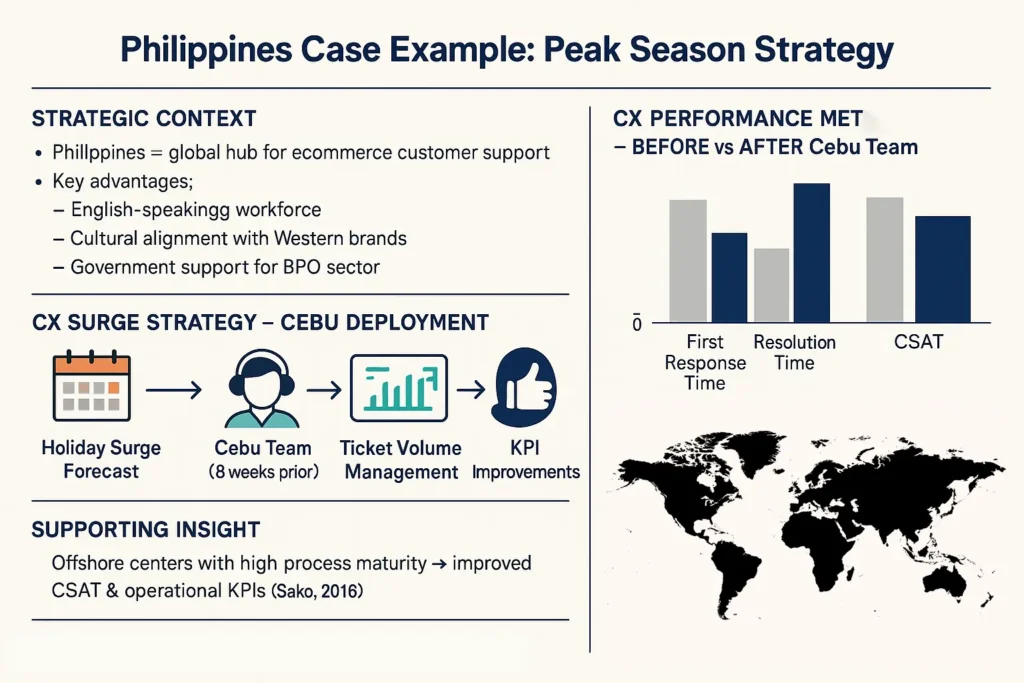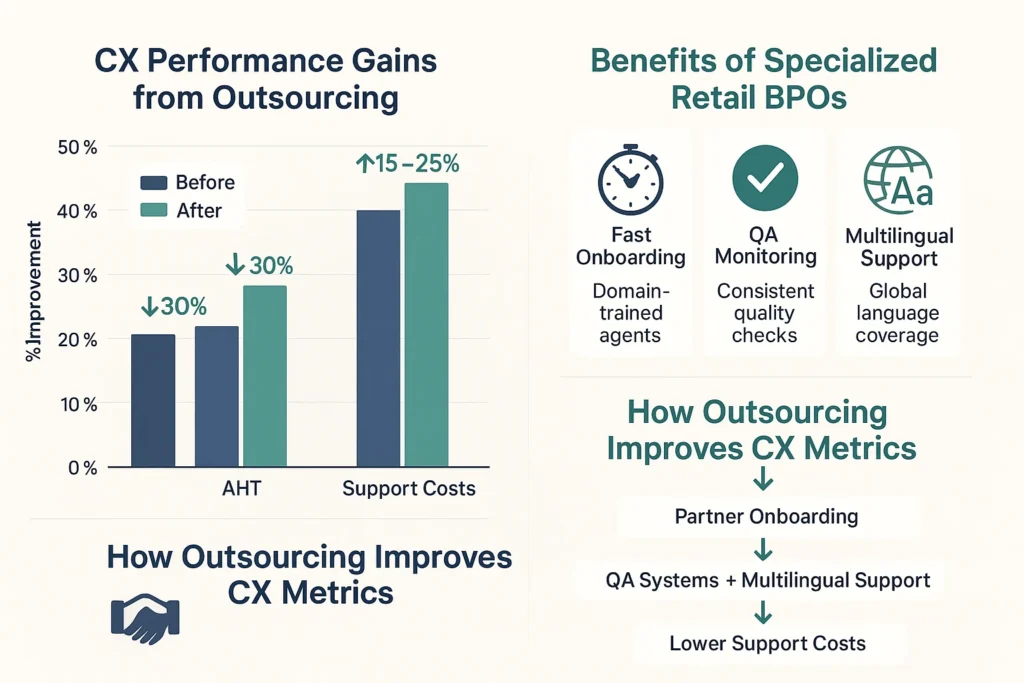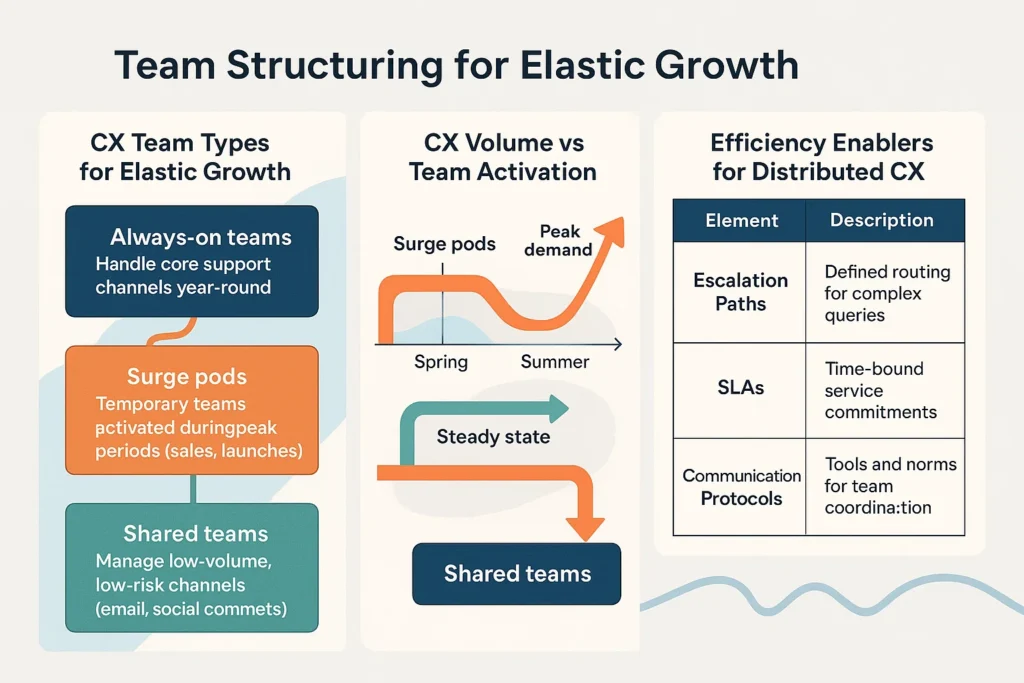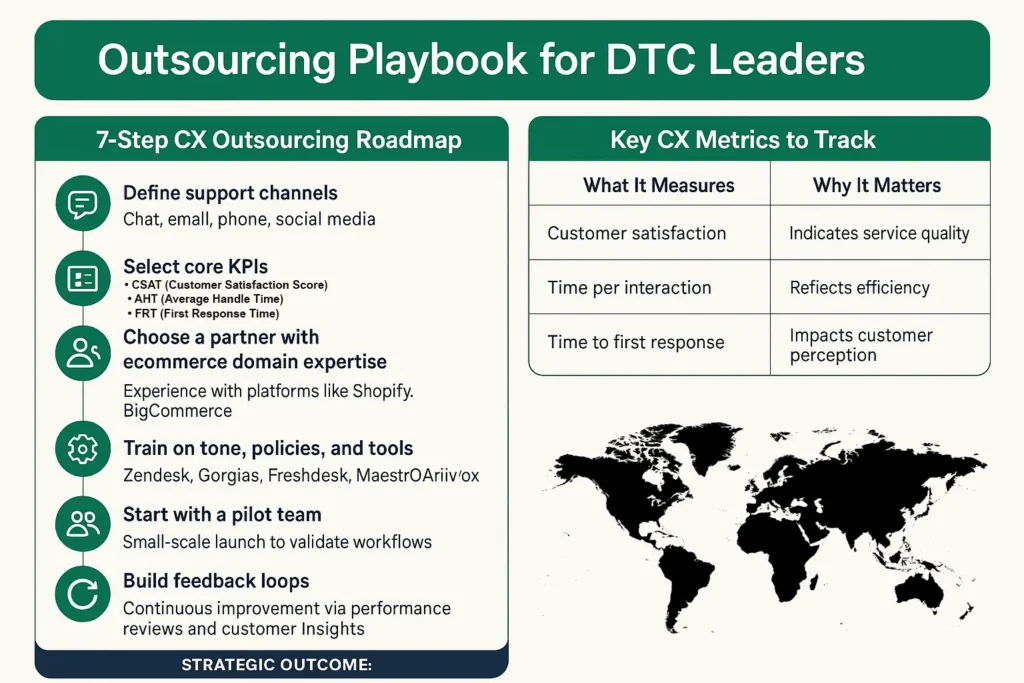Direct-to-consumer (DTC) brands thrive on customer experience (CX). With no intermediaries, the pressure to deliver fast, seamless, and empathetic support is relentless. Yet as retail brands scale—especially during peak sales periods like Black Friday or Christmas—maintaining high-quality customer service becomes difficult and expensive.
Surging order volumes, multiple support channels, and rising expectations for instant resolutions can overwhelm even well-staffed in-house teams. That’s why customer support outsourcing has become an essential strategy for retail brands looking to scale support operations without overextending internal resources.
A study by Deloitte (2021) found that 78% of fast-growing retailers outsource some part of their CX operations, especially during seasonal spikes.
Unlike traditional BPO models, modern offshore ecommerce CX is agile, omnichannel, and deeply embedded in brand workflows. Offshore support pods—small, brand-trained customer service teams—offer 24/7 coverage at a fraction of domestic staffing costs.
Key advantages include:
Additionally, outsourcing helps brands maintain brand tone and personalization through rigorous training and QA automation, while freeing in-house teams to focus on strategic tasks like retention and upselling.

The retail BPO Philippines sector has become a global hub for ecommerce customer support. With a vast English-speaking workforce, strong cultural alignment with Western brands, and government support for BPO development, the Philippines is the go-to for offshore CX.
Take the case of a fast-growing DTC apparel brand in Los Angeles. Facing holiday season surges of over 300% in support tickets, the brand onboarded a 20-agent CX team in Cebu just eight weeks before Black Friday. The results were telling:
These outcomes are supported by academic literature showing that offshore support centers with high process maturity deliver significant gains in customer satisfaction and operational KPIs (Sako, 2016).

Key metrics like Average Handle Time (AHT) and Customer Satisfaction Score (CSAT) drive CX quality. By outsourcing to specialized retail BPO partners, brands often experience:
According to McKinsey (2022), companies that outsource CX effectively see an average 15–25% boost in CSAT scores, and up to 30% reduction in AHT—all while reducing support costs by nearly 50%.
Outsourcing doesn’t mean sacrificing tech integration. Top-tier partners integrate directly with:
QA automation ensures agents follow scripts, use proper tone, and deliver consistent resolutions. This tech-first approach ensures brand fidelity, even when service is delivered offshore.
Additionally, many vendors offer AI-driven sentiment analysis, helping brands proactively identify issues and optimize agent training in real time.

Elasticity is key for retail brands whose support volumes vary drastically throughout the year. Offshore partners enable:
This structure allows for seasonal scalability without the financial and logistical burden of constant hiring and layoffs.
According to Hossain et al. (2009), distributed CX teams are more efficient when structured with clear escalation paths, defined SLAs, and transparent communication protocols.

For DTC founders, brand managers, and CX leads considering outsourcing, here’s a proven roadmap:
With the right setup, customer support outsourcing becomes a revenue driver—not just a cost-saving tactic. Offshore CX teams offer agility, cost control, and quality—unlocking growth without friction.
In the age of instant gratification, CX is the new brand battleground. For DTC brands scaling fast, the challenge isn’t whether to outsource—it’s how to do it strategically.
By embracing offshore ecommerce CX, leveraging the expertise of retail BPO Philippines providers, and building elastic support pods, brands can achieve seasonal scalability, operational efficiency, and consistently high customer satisfaction—24/7, globally.
Deloitte. (2021). Global Outsourcing Survey: CX in the Post-Pandemic Era.
https://www2.deloitte.com/insights/us/en/focus/global-outsourcing.html
McKinsey & Company. (2022). Customer Care in 2022: The State of CX Transformation.
https://www.mckinsey.com/business-functions/mckinsey-digital/our-insights/customer-care-in-2022
Sako, M. (2016). Outsourcing and Offshoring of Customer Services: Global Strategies.
https://doi.org/10.1017/CBO9781316492672
Hossain, E., Babar, M. A., & Paik, H. Y. (2009). Using Agile and Scrum in Offshore Teams: A Systematic Review.
https://doi.org/10.1109/ICGSE.2009.25
Philippine Statistics Authority. (2023). BPO Sector Continues Growth Surge, Driven by Ecommerce Demand.
https://psa.gov.ph/content/bpo-sector-records-growth-2023
Join thousands of businesses leveraging offshore staffing to scale their operations globally
Expand effortlessly with My Offshore Employees - access top 1% offshore talent starting at just $3/hr or $600/month per FTE. No hidden fees, no compromises on quality. Your offshore employees work exclusively for you - ensuring focus, transparency, and real-time visibility into your projects. We combine smart automation and proven industry experience to deliver higher productivity, fewer errors, and tailor-made solutions for your business growth.
© 2025. All Rights Reserved.